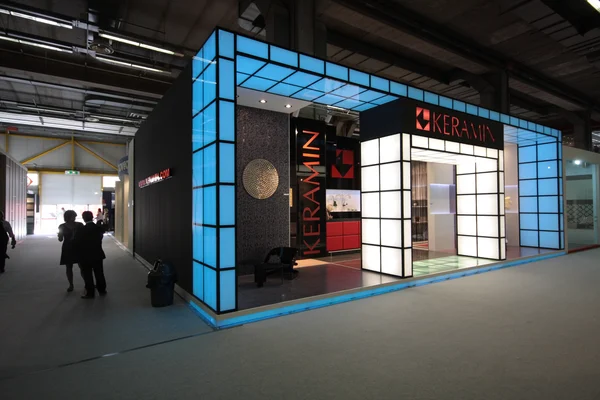Table of Contents
Crafting an exhibition stand that captivates and engages your audience is no small feat. It’s a blend of art, marketing, and design, crafted to create an unforgettable experience for your visitors. Here’s a detailed guide, peppered with expert insights, to help you create an exhibition stand that’s not just a space, but a storytelling canvas.
Tailoring to Their Interests
Before you dive into the design, take a step back and ponder: Who are you designing for? Your exhibition stand design should be a mirror reflecting the interests, needs, and preferences of your target audience. Are they tech aficionados or maybe industry experts? Grasping their expectations sets the stage for a design that resonates and connects.
Your Brand, Your Identity
In the world of exhibition stand design, your brand is your story. From color schemes to logos, every element should scream “This is us!” A consistent brand theme across your stand not only enhances recognition but also strengthens your professional image. It’s like wearing your best suit to an important meeting – you want to look your part!
Designing for Interaction
Think of your exhibition stand as a journey, one that guides your visitors from “Hello” to “Wow!” An open, inviting layout is like a welcoming handshake; it draws people in. Consider traffic flow, interactive zones, and private meeting areas. A well-thought-out layout ensures visitors don’t just pass by, but stop and engage.
Setting the Mood with Lights
Lighting in exhibition stand design is the secret sauce that can transform your space. It’s not just about being seen; it’s about creating an ambiance. Use lighting to highlight key areas, set the mood, or focus attention on your products. It’s like setting the stage for your brand’s performance.
A Picture Speaks a Thousand Words
Your graphics are your silent ambassadors. Bold, clear, and impactful graphics can tell your brand story at a glance. Think large-scale images, catchy taglines, and striking colors. Remember, in the exhibition world, your graphics are your first conversation with visitors.
Tech-Savvy Solutions
Incorporating technology into your exhibition stand design is like giving your visitors a VIP ticket to the future. Interactive screens, virtual reality, or augmented reality experiences can elevate your stand from traditional to extraordinary. It’s not just about showing off gadgets; it’s about creating immersive experiences.
Eco-Friendly Designs
In today’s world, being green is not just a trend; it’s a responsibility. Sustainable materials, energy-efficient lighting, and recyclable components are not just good for the planet; they also send a powerful message about your brand’s values. An eco-friendly stand can be a significant draw for environmentally conscious visitors.
Expertise Makes a Difference
Collaborating with a professional exhibition stand designer can be the difference between good and great. These experts bring a wealth of experience, creativity, and technical know-how, ensuring that every aspect of your stand is optimized for success. It’s like having a seasoned guide for your expedition into the exhibition wilderness.
Ready for Anything
The world of exhibitions is ever-changing. Your stand should be designed with flexibility in mind. Modular components that can be reconfigured or reused for different events ensure that your stand can evolve with your needs. Being adaptable in your design approach means you’re always ready for the next opportunity.
Conclusion
Designing an eye-catching exhibition stand is a blend of understanding your audience, staying true to your brand, and embracing innovation and sustainability. By collaborating with a professional exhibition stand designer and focusing on flexibility, you can create a space that’s not just a stand, but a memorable experience for your visitors. Remember, your stand is more than just a structure; it’s the physical embodiment of your brand’s story, ready to unfold in the bustling world of exhibitions.





